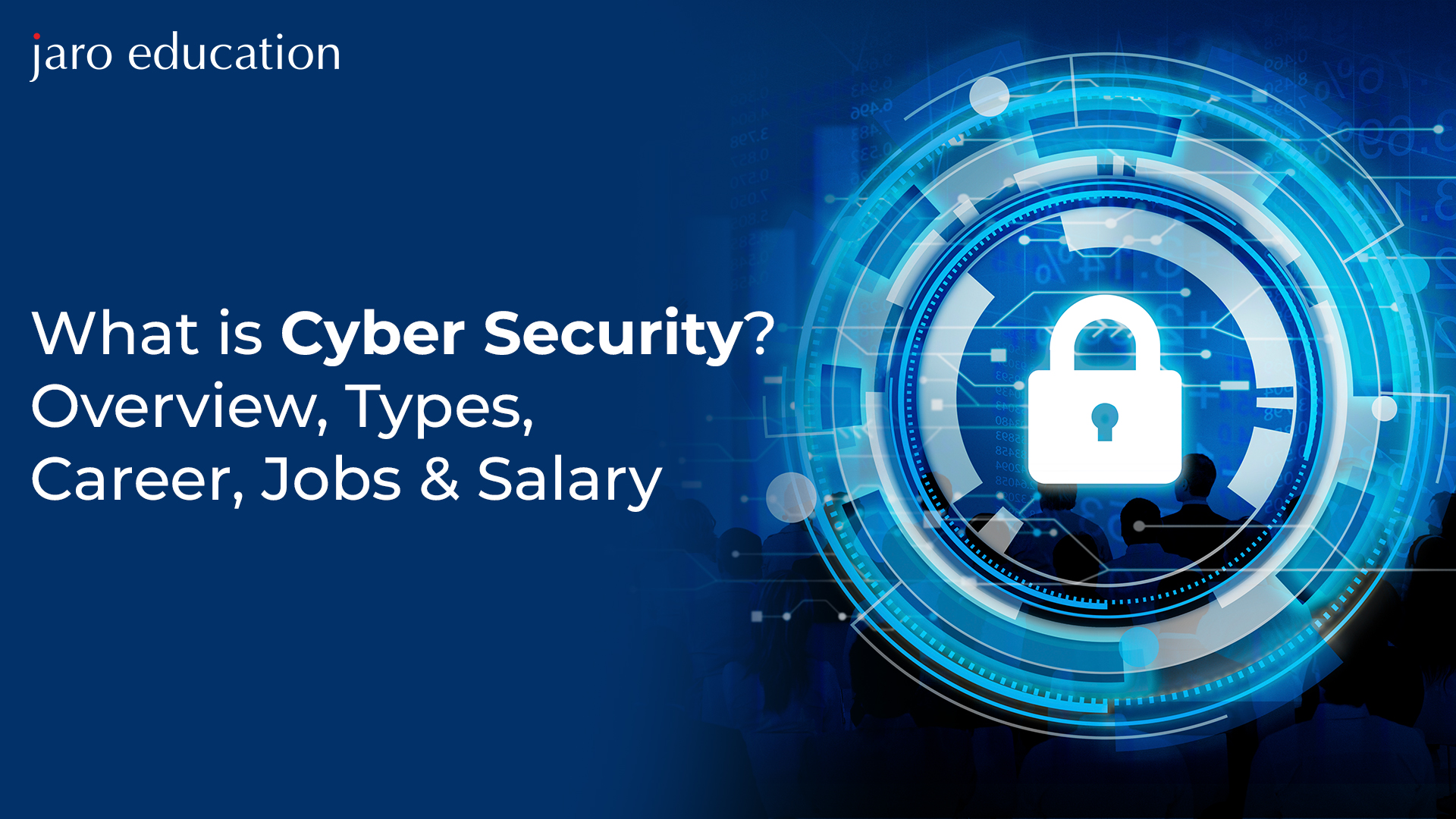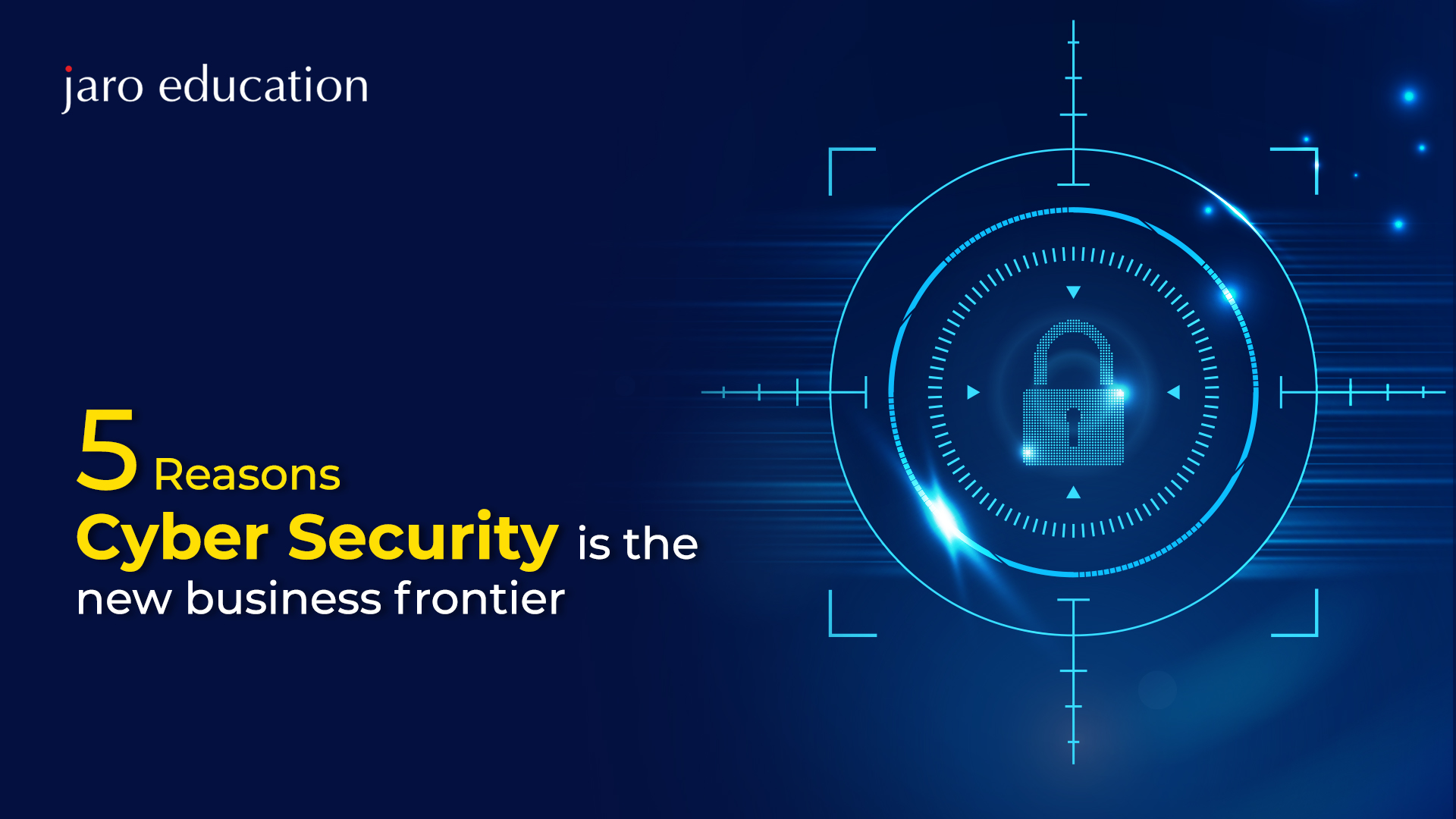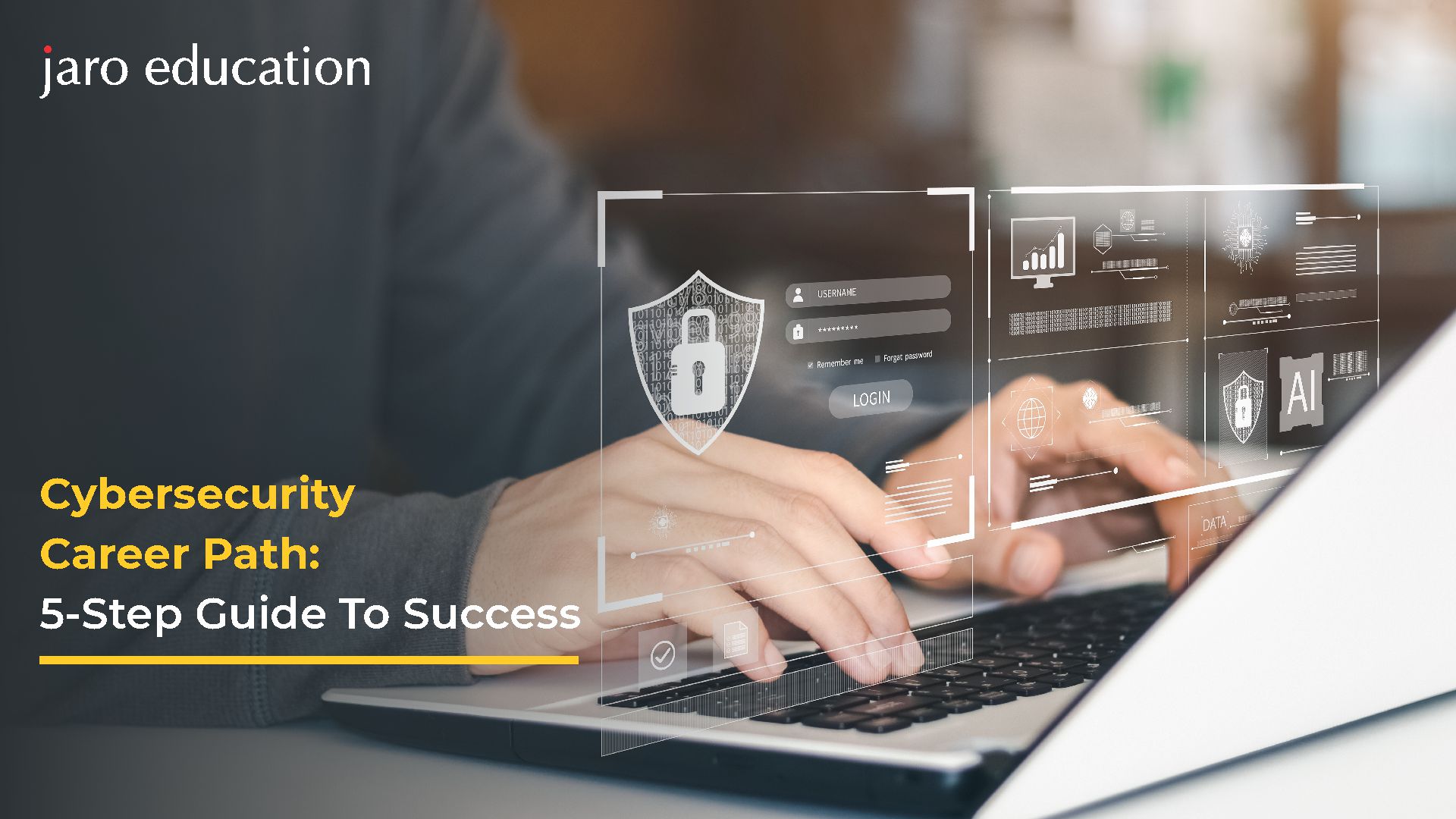
- jaro education
- 8, February 2024
- 11:00 am
The way we interact and communicate with the world around us has been entirely transformed by the Internet of Things (IoT). Through an IP (Internet Protocol) address, a wide range of digital and mechanical equipment, people, objects, and even animals remain interconnected across a shared network and share data. Major corporations frequently utilise IoT to share data both within and outside their facilities, resulting in a wide range of applications that improve services, production, connectivity, and communication. In this blog, we will understand what is Internet of Things, its applications in different sectors and many more.
As the IoT landscape grows, the need for strong cybersecurity measures becomes ever more important. Protecting against growing cyber threats is essential in the realm of IoT applications. Enrolling in the Cyber Security programme by IIM Indore is highly recommended for IoT professionals. This interdisciplinary training, designed for both non-technical professionals and IT experts, provides participants with comprehensive cybersecurity knowledge to protect real-world IoT applications.
Basic Concept of IoT (Internet of Things)
The Internet of Things, commonly referred to as IoT, encompasses a network of interconnected objects facilitated by technology, enabling communication between these objects and the cloud. The proliferation of low-cost computer chips and high-bandwidth telephony has led to the integration of billions of devices with the Internet. Consequently, everyday items such as toothbrushes, vacuums, cars, and machines can now utilise sensors to collect information and respond intelligently to human interactions.
Table of Contents
10 real-world applications of IoT
Applications of IoT at different places are as follows:
1. Healthcare
In the first place, wearable IoT devices allow hospitals to keep tabs on their patient’s health when they are away from the hospital, thereby shortening hospital stays while still giving up-to-the-second real-time information that could save lives. Smart beds in hospitals keep the staff aware of the availability, reducing the time spent waiting for a free space. Adding IoT sensors to essential machinery will result in fewer failures and more dependability, which might be the difference between life and death. With IoT, elderly care is substantially more comfortable. Sensors can tell if a patient has fallen or has a heart attack in addition to the real-time home monitoring stated above.
2. Industrial Use
IoT is pivotal in enhancing industrial processes and efficiency. In the industrial sector, IoT applications involve data analysis, sensors, tracking devices, and machinery to optimise operations. This technology provides businesses with accurate, transparent, and efficient means of production and maintenance. It enables the identification of areas that require attention or repair, leading to a more sustainable approach in industrial operations.
3. Smart Homes
The concept of smart homes has become a reality with IoT. IoT applications in smart homes allow homeowners to control and supervise various aspects of their living spaces, including lighting, security, climate control, and appliance management through their smart devices. This results in a more convenient and comfortable living experience and substantial savings in terms of time and energy.
4. Smart Cities
IoT’s impact extends beyond individual homes to entire cities, making urban life smarter and more efficient. Smart city applications involve various sectors, including transportation, government services, traffic management, healthcare, agriculture, water and energy management, and waste disposal. IoT-driven solutions create a sustainable living environment by resolving urban challenges, improving infrastructure, and enhancing security and development.
5. Agriculture
The agricultural sector benefits significantly from IoT applications, addressing the increasing demands of a growing population. IoT offers intelligent solutions, such as automated monitoring, to help farmers optimise their operations. IoT technology aids in precise fertilisation, efficient water usage, timely harvest, soil analysis, and livestock monitoring. Furthermore, IoT can predict weather patterns, providing farmers with valuable insights for crop management.
6. Smart Supply Chain
IoT is transforming supply chain management by improving efficiency and reducing costs. Traditional supply chains often involve high manpower and resource consumption. IoT introduces tracking systems, such as GPS and radio frequency sensors, to monitor goods, shipment processes, and transportation operations with minimal human intervention. This leads to streamlined operations and optimised resource usage, benefiting companies at all levels.
7. Retail Purpose
Retailers leverage IoT applications to connect with consumers personally. IoT-enabled interactions allow retailers to obtain real-time feedback and adapt their inventory to meet local demand. The overall in-store experience is enhanced, from effective product advertising to well-maintained supply chains. Payment procedures are also optimised through IoT, making shopping more convenient for customers.
8. Transportation
The majority of people have probably heard by now about the developments in self-driving automobiles. But it only represents a small portion of the enormous potential in the transportation sector. In order to help transportation businesses plan quicker and more effective routes for trucks delivering goods, reducing delivery times, the GPS is used—which, if you think about it, is another form of IoT. Navigation has advanced significantly, a reference to a phone or vehicle’s GPS once more. However, those statistics can also be used by municipal planners to plan for road building and upkeep, parking demand, and traffic patterns.

*hackr.io
9. IoT Applications for Travel and Tourism
The tourism and travel sectors have a greater adoption of IoT. Modern high-end hotels have begun using mobile keys. When a hotel visitor receives a notification that their room is ready, they only need to wave their mobile device to open the door. Since there is no waiting, the process is fairly simple for the visitors as soon as they come. A distinct digital identity can be used to collect data from each room, and each can be booked, reviewed, and evaluated. By monitoring the controlled temperatures, light levels, minibar goods, music suggestions, favourite TV channels, and many other factors, each guest’s preferences can be recorded for a personalised stay experience.
10. Wearables
Wearables have tons of uses, including medical, exercise, and GPS tracking. In the past three years, these IoT numbers have more than doubled. The fitness bands keep track of calorie consumption, distance travelled in metres, heartbeats per minute, blood oxygen levels, and more. These IoT primarily take the form of watches and wristbands. However, they can also take the form of earbuds, clip-on gadgets, or intelligent fabric.
Other wearables include GPS tracking belts and virtual eyewear. Data about users is gathered and organised by these compact, power-saving gadgets with sensors and software. Leading corporations, including Apple, Google, Fitbit, and Samsung, first introduced the Internet of Things.
Java and the Internet of Things
The role of Java in IoT programming is essential, as it forms a smooth connection for tapping into new business opportunities and driving actions using IoT data. With Java, you can securely stream, analyse, and integrate real-time IoT data from diverse connected devices into your enterprise applications. This synergy allows for data collection from many devices, seamless integration with enterprise applications at scale, the execution of real-time predictive analytics on IoT streams, and the empowerment of mobile and enterprise applications to control devices. Successful IoT implementation hinges on connectivity among devices, robust IoT frameworks, and platforms, all of which Java supports, enabling the development of value-added applications and solutions for enterprises in this ever-evolving landscape of IoT.
Advantages of IoT Applications
IoT applications offer numerous advantages across various sectors, including:
Enhanced Security
IoT enables remote monitoring and control of homes, enhancing personal safety.
Improved Connectivity
One of the prime benefits of IoT is that it keeps individuals and family members connected virtually.
Efficient Electricity and Energy Usage
IoT devices can communicate and operate appliances more efficiently, reducing energy waste.
Pocket Personal Assistance
Leveraging IoT applications helps with personal services that assist in managing daily plans.
Enhanced Road Safety
By using IoT applications like GM OnStar one can automatically detect accidents and call for help.
Better Healthcare and Management
Real-time patient monitoring and data analysis enable evidence-based treatment.
Cost-efficient Business Operations
IoT enhances various business processes, such as asset tracking, inventory control, and customer management.
Disadvantages of IoT Applications
While IoT has numerous benefits, it also presents some challenges, including:
Privacy Issues
The potential for data breaches and privacy concerns arise with the constant connectivity of IoT devices.
Overreliance on Technology
Overdependence on the internet and technology can lead to a lack of critical thinking and physical activity.
Sedentary Lifestyle
IoT can encourage a more sedentary lifestyle as people increasingly rely on devices for daily tasks.
Unemployment
IoT may replace jobs in specific industries, impacting employment opportunities for unskilled labourers.
Future of IoT
The number of connected devices across all types of technology is expected to reach 20.6 billion, according to a Gartner estimate. According to HP, that amount may reach 1 trillion by 2025, which is a stunning quantity. According to a Cisco estimate, IoT devices will generate $14.4 trillion in value over the next ten years for a variety of businesses, including those indicated above.
In other words, the Internet of Things is set to bring about life-changing circumstances in our lives, both personally and professionally. Many of the advances described are already in use, either fully or partially. There is no turning back; that much is certain. No sector can ignore the IoT’s extraordinary level of efficiency and control.
Conclusion
IoT has transformed how we live and work by connecting the virtual world to our real-time lives. IoT has improved personal well-being and business practices by using RFID, sensors, artificial intelligence, connectivity, and communication devices. IoT is not merely a tool for communication without human interaction; it has become an integral part of our daily lives, contributing to better economies and enhanced lifestyles. The top 10 real-world applications of IoT underscore its significance in healthcare, industry, smart homes, cities, agriculture, supply chains, retail, transportation, smart grids, and wearables. As IoT continues to evolve, its impact is poised to grow, making it an indispensable part of our future.
In recognition of the evolving landscape shaped by technologies like IoT, it is crucial for professionals to stay ahead in the realm of cybersecurity. The “Executive Programme in Artificial Intelligence and Cyber Security for Organizations [EPAI&CSO]” offered by IIM Indore is made to equip engineers, non-technical professionals, project managers in the IT industry, and young IT professionals with a comprehensive understanding of cybersecurity. This program deals with the aspects such as threat intelligence, risk management, security policy, network security, and incident response. Enrol for this programme through Jaro Education








